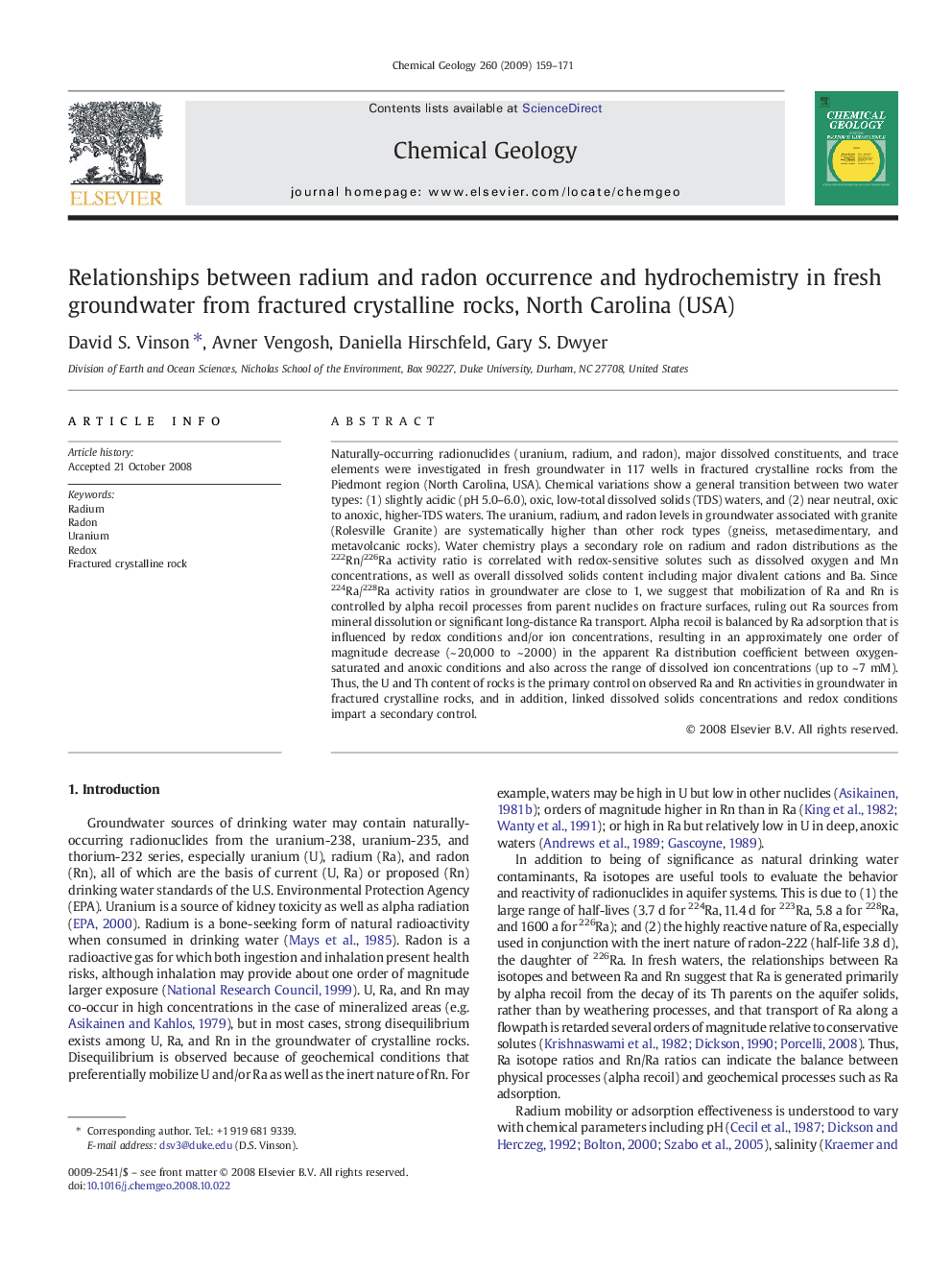| Article ID | Journal | Published Year | Pages | File Type |
|---|---|---|---|---|
| 4700380 | Chemical Geology | 2009 | 13 Pages |
Abstract
Naturally-occurring radionuclides (uranium, radium, and radon), major dissolved constituents, and trace elements were investigated in fresh groundwater in 117 wells in fractured crystalline rocks from the Piedmont region (North Carolina, USA). Chemical variations show a general transition between two water types: (1) slightly acidic (pH 5.0-6.0), oxic, low-total dissolved solids (TDS) waters, and (2) near neutral, oxic to anoxic, higher-TDS waters. The uranium, radium, and radon levels in groundwater associated with granite (Rolesville Granite) are systematically higher than other rock types (gneiss, metasedimentary, and metavolcanic rocks). Water chemistry plays a secondary role on radium and radon distributions as the 222Rn/226Ra activity ratio is correlated with redox-sensitive solutes such as dissolved oxygen and Mn concentrations, as well as overall dissolved solids content including major divalent cations and Ba. Since 224Ra/228Ra activity ratios in groundwater are close to 1, we suggest that mobilization of Ra and Rn is controlled by alpha recoil processes from parent nuclides on fracture surfaces, ruling out Ra sources from mineral dissolution or significant long-distance Ra transport. Alpha recoil is balanced by Ra adsorption that is influenced by redox conditions and/or ion concentrations, resulting in an approximately one order of magnitude decrease (~Â 20,000 to ~Â 2000) in the apparent Ra distribution coefficient between oxygen-saturated and anoxic conditions and also across the range of dissolved ion concentrations (up to ~Â 7Â mM). Thus, the U and Th content of rocks is the primary control on observed Ra and Rn activities in groundwater in fractured crystalline rocks, and in addition, linked dissolved solids concentrations and redox conditions impart a secondary control.
Related Topics
Physical Sciences and Engineering
Earth and Planetary Sciences
Geochemistry and Petrology
Authors
David S. Vinson, Avner Vengosh, Daniella Hirschfeld, Gary S. Dwyer,
